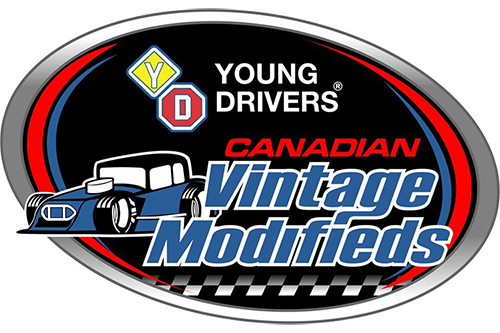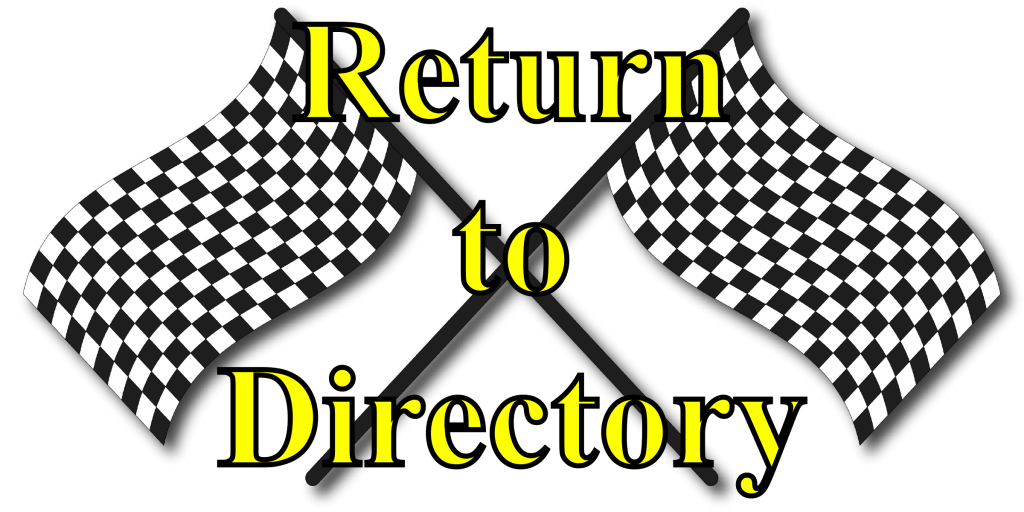Following World War 2, car manufactures developed newer look cars. The demand for these newer cars was soaring, leaving the Pre War cars on the sidelines.
Enter Stock Car racing in North America, and a demand for the beautiful nostalgic Ford, GM and Chrysler cars of yesteryear. Over 2000 tracks in the USA and Canada were entertaining race fans every night of the week. Venues were as varied as the body styles. Dirt and paved tracks were common, but in the beginning horse tracks were used as the thirst for stock car racing went wild.
In Canada these cars were the fun class, giving beginners a place to start. Known as Junkers and then Jalopies, it was an exciting form of racing and became very popular at every race track.
By the late 40’s and early 50’s the CNE, Pinecrest, Speedway Park, Nilestown, Bridgeport and many other tracks were operating at full capacity with car count, prompting more tracks to open in the early 60’s. Soon speedways popped up everywhere, Flamboro, Sunset, Sauble, Wasaga, Sutton, Varney, Acton, Hideway, Delaware, Peterborough, Cayuga and others.
As times changed, so did the professionalism of the racers. Jalopies were renamed Hobby cars, getting rid of the Clown Car handle.
Stock car racing, though popular, struggled with laws and expansion of cities that would dictate what tracks could do, many closed down. The CNE shut the doors to weekly stock car racing in 1966. By the fall of that year the Hobbies formed their own series, the Ontario Amateur Racing Club, moving their weekly races to Flamboro Speedway.
The cars were mostly flat heads at the beginning but soon the inline six made its debut and slowly became the engine of choice as the big 3 produced an abundance of six cylinder engines.
The OARC were very strong and well organized. Cars had to be pre 1949. A nine man committee would run the club as a business. There were so many cars by 1967; registration was limited to 125 cars.
In 1972 the Hobby class was without a home track. Flamboro had closed the doors, while the owner Rocco DiCarlo concentrated on his other track Pinecrest Speedway. The Hobby cars raced at Speedway Park on Friday night and Pinecrest Speedway on some Saturday’s, and even Tuesdays. The club executive did whatever it could to facilitate a full race schedule.
In 1973 new owners John and Frank Casale bought Flamboro Speedway and the Hobby Club were back home. They continued racing at Flamboro and Speedway Park, Fridays and Saturdays, thrilling fans two nights a week. They also made treks to Pinecrest, Westgate, Sauble, Sunset and Varney for Sunday afternoon specials.
By the mid 70’s every track wanted a piece of the OARC because of strong car count, the appearance of these beautiful Coupes and Coaches and the intense competition. It was common place for the Hobby Club to race 30 plus nights a year.
The club introduced the Gold Cup Series in the mid 70’s allowing to crown 2 Champions. Eventually a 3rd Overall Champion was added for those who raced both Flamboro and the Gold Cup travelling series.
The Hobby club grew in diversity. New ways to entertain fans were developed. Support of charities like the Easter Seal Foundation was started in 1984. Drivers went through the grand stands with their helmets collecting money. A Ladies Auxiliary was formed and they held their own Demo Derby against women of the Street Stocks and Sportsman, with all monies going to the East Seal Foundation.
The Hobby Hall of Fame was formed, recognizing former members for their dedication and contributions.
The Twin 25’s, Mechanics race, and Ladies Powder Puff, and soon the Hobby Fan Club became part of the makeup of this fan and track friendly class.
In 1984 the series headed for their first jaunt, the East Coast Tour. Sixteen cars made stops at Maine’s Aroostook County Speedway, Riverside Speedway in Nova Scotia, River Glade and Hammond River Speedways in New Brunswick. It made for a fun trip and great opportunity to bond.
In 1985 the demand for the Hobby Club stretched to the USA. It was the beginning of a 15 plus year annual trip to Michigan. Kalamazoo, Mount Clements, Berlin, Ideal, Galesburg, Spartan, Whitemore, Dixie and I-40 speedways were all visited, some many times. The Hobby name was slowly being replaced by Canadian Coupes and Coaches and eventually the name Canadian Vintage Modifieds would replace, but not omit; the once popular name Hobby Club… some will always call it the Hobby Club.
In 1999 the Hobby club left their home track to venture on a tour of their own racing at many local Ontario tracks that were not able to see them on a Saturday night. They didn’t travel very much from 1973 till 1998 in Ontario for a Saturday night race, though every long weekend in the mid 70’s and through the 80’s the Hobbies would race Friday at Delaware, Saturday at Flamboro and Sunday at Sauble, Sunset, Peterborough, Cayuga or Varney.
Returning to Flamboro Speedway to race half their 24 race schedule was arranged in 2002 and brought great racing back to the Hamilton area speedway. Flamboro had 12 nights and the other 12 were divided up between the other tracks, known as the Gold Cup Series.
By 2010 signs of weakening car counts alarmed many promoters, fans and the series leaders. Men and women offered opinions and effort to find ways to lower costs. The tire rule was very good and the introduction by 2010 of the Crate engine truly helped bring costs down. But something was missing. Cell phones, social media, a nonstop work environment took away the TLC the series needed and resulted in dwindling car counts.
By 2018 Flamboro Speedway once again became the home track, though some nights saw as few as 10 cars, something that stunned the racing community, prompting whispers the series was done. What was happening to the CVM? Many past and present members made suggestions on how to bring this great race division back to its hay day, no one wanted to see it disappear. The answer was simple, someone needed to spend many hours to resurrect it, and that meant another huge injection of TLC.
In 2019-2020 a tremendous effort has been put forth by the current CVM executive to connect with the many car owners who had parked their cars and sponsors, to bring this great series away from the edge of extinction.
It appears the hard work is paying off with over 25 cars registered for the 2020 season, something that will not only make the track owner happy to see, but all the former members and most of all the fans.
Approaching its 54th birthday, the CVM looks like it just shocked the racing world, only this time with a full field of beautiful nostalgic race cars.


